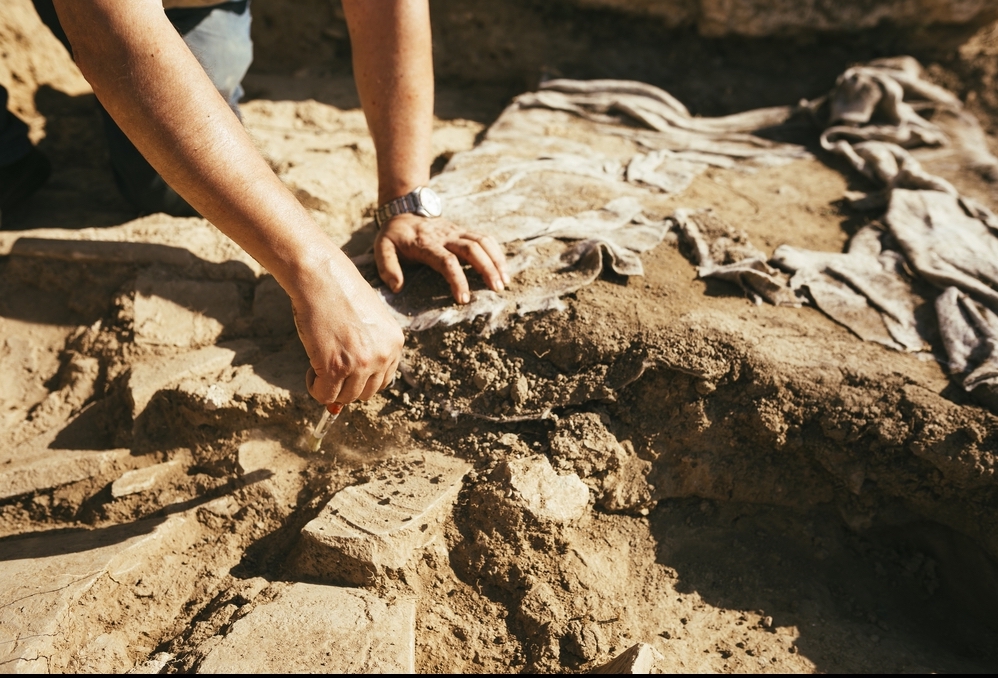Archaeologists have claimed a new discovery could provide definitive proof that the Bible is real.
A new scientific breakthrough at a site in ancient Jerusalem appears to overturn expert opinion and verify claims made in the Bible, according to reports.
Until now, experts have believed that a stretch of wall in the original center of the city was built by Hezekiah, King of Judah, who reigned between the seventh and eighth centuries BC.
It was believed that he built the wall to defend against invaders after seeing the Kingdom of Israel to the north destroyed by the Assyrian Empire.
However, the new findings appear to show it was built much earlier than that, backing up claims made in the Bible.
According to the new study, which has taken almost a decade, the wall was actually built by his great-grandfather Uzziah, after a huge earthquake – which echoes the account of the Bible.
The wall exists in the City of David, the historical archaeological site that formed the original town of Jerusalem, according to the Bible.
Joe Uziel of the Israel Antiquities Authority (IAA) explained: “For decades, it was assumed that this wall was built by Hezekiah, King of Judah.
“But it is now becoming clear that it dates back to the days of King Uzziah, as hinted at in the Bible.
“Until now, many researchers assumed that the wall was built by Hezekiah during his rebellion against Sennacherib, King of Assyria, in order to defend Jerusalem during the Assyrian siege.
“It is now apparent that the wall in its eastern part, in the area of the City of David, was built earlier, shortly after the great earthquake of Jerusalem, and as part of the construction of the city.”
The construction of the wall is described in the Old Testament in the Second Book of Chronicles.
According to the Bible: “Uzziah built towers in Jerusalem at the Corner Gate, at the Valley Gate and at the angle of the wall, and he fortified them.”
The holy text also speaks of seismic activity, with the Old Testament Book of Amos dated “two years before the earthquake, when Uzziah was king of Judah”.
The new discovery was made using carbon-14 dating in a joint project between the IAA, Tel Aviv University, and the Weizmann Institute of Science.
The technique, also known as radiocarbon dating, dates objects containing carbon-bearing material by analyzing the decay of a radioactive isotope of carbon (14C).
According to the IAA, this time in history was previously difficult for carbon-14 dating, due to fluctuating levels of the isotope in the atmosphere at the time.
However, they were able to measure the fluctuations year-by-year by using ancient tree rings from Europe.
Elisabetta Boaretto of the Weizmann Institute, explained: “The resolution of c-14 was very bad – 200-300 years; it was impossible to distinguish anything else.
“With the work we’ve done in the City of David, we succeeded to reach a resolution less than 10 years, which is really something very very new and dramatic.”
Samples were taken from organic artifacts found at four different excavation sites in the ancient center of Jerusalem, including date pits, grape seeds, and bat skeletons, which were cleaned and converted to graphite before being put into a particle accelerator at speeds of 3,000km per second to separate the carbon-14 from other organic material.
Measuring the carbon within the samples then allowed them to work out the true age of the material.
According to Yuval Gadot of Tel Aviv University, the findings had also pushed the westward expansion of the city back by five generations.
He explained: “Until now, most researchers have linked Jerusalem’s growth to the west, to the period of King Hezekiah – just over 2,700 years ago.
“The conventional assumption to date has been that the city expanded due to the arrival of refugees from the Kingdom of Israel in the north, following the Assyrian exile.
“However, the new findings strengthen the view that Jerusalem grew in size and spread towards Mount Zion already in the ninth century BC.
“This was during the reign of King Jehoash – a hundred years before the Assyrian exile.
